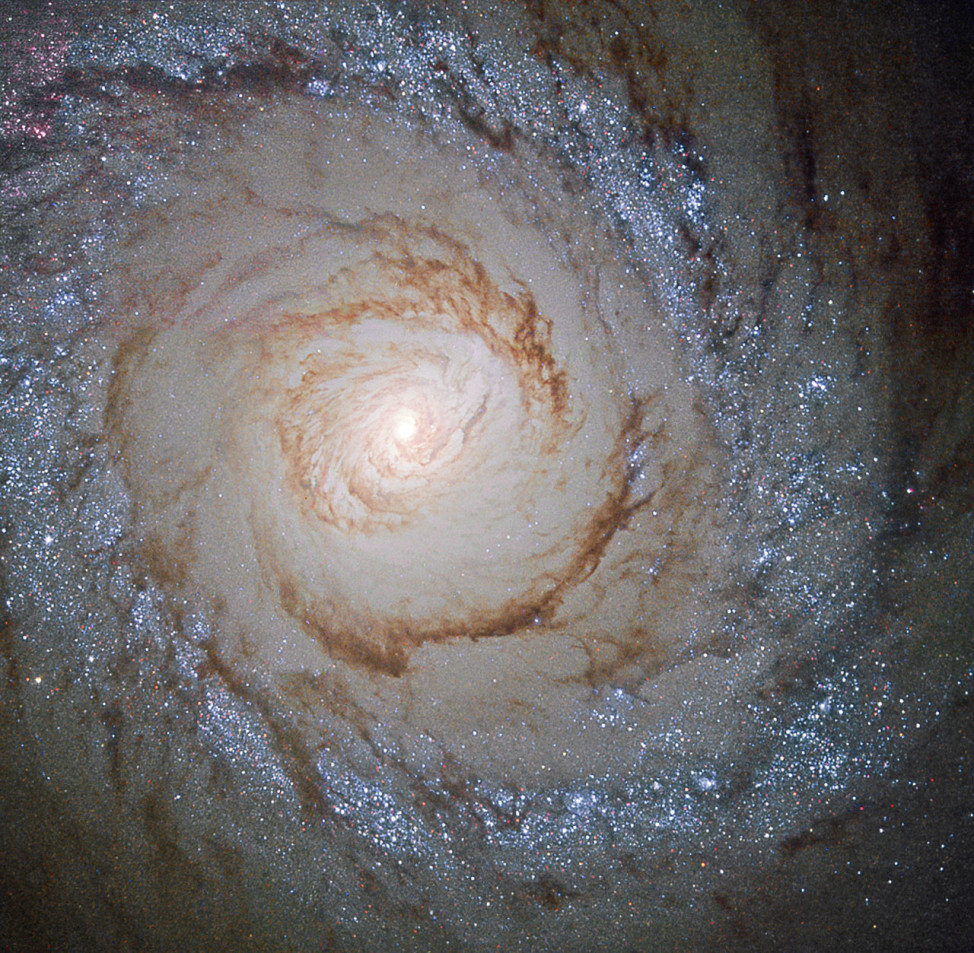
This is the starburst galaxy Messier 94 as seen by the Hubble Space Telescope in an image released 10/19/15. Within the bright ring area, also called the starburst area, new stars are being formed at a high rate of speed. (ESA/NASA)

New observations from NASA’s Swift and the Nuclear Spectroscopic Telescope Array, or NuSTAR caught a supermassive black hole in the midst of a giant eruption of X-ray light. In this artist’s image, released on 10/27/15, an x-ray flare can be see blasting from the corona of the supermassive black hole Mrk 335. (NASA/JPL-Caltech)

Little three year-old Miyah Williams holds her old leg prosthesis as she wears a new and more high-tech version that was attached several months earlier. Miyah was at a 10/23/15 meeting in Washington, DC that discussed problems with pediatric prosthetic devices. (AP)

On 10/7/15 NASA announced that it had successfully completed testing on heat shields (such as the one pictured here) that would be used on future Mars exploration vehicles. (NASA)

On 10/28/15 NASA’s Cassini spacecraft flew close to the surface of Enceladus, one of Saturn’s moons. The spacecraft captured images of the moon’s southern polar region. This image was taken in visible light with the Cassini spacecraft wide-angle camera from a distance of about 124 km above the moon’s surface (NASA/JPL-Caltech/Space Science Institute)

The Hubble Space Telescope recently gathered the largest sample of the faintest and earliest known galaxies in the universe. Some of these galaxies formed just 600 million years after the Big Bang. This is an image of the galaxy cluster MACS J0416.1–2403 that was released on 10/22/15. (ESA/NASA)

U.S. President Barack Obama takes a look at the moon through a telescope at the second White House Astronomy Night held on the South Lawn of the White House, Washington, DC on 10/19/15. The annual event brought students, teachers, astronomers, engineers, scientists, and space enthusiasts together for an evening of stargazing. (AP)

This photo of the category 5 Hurricane Patricia was taken from the International Space Station on 10/23/15 when it made landfall in Mexico. According to weather officials, Patricia was the strongest recorded hurricane in the Western Hemisphere. (Scott Kelly/NASA)

This is Belgium’s Punch Powertrain Solar Team car at the 2015 World Solar Challenge held near Dunmarra, Australia on 10/19/15. The 3,000 km race from Darwin to Adelaide, Australia featured 45 solar cars from 25 countries. (AP)

























wow nice
Images from the Hubbell space telescope combined with images from other orbiting and ground based telescopes have rekindled my childhood interest in astronomy. While building or buying a telescope to view the night sky directly was fun, it now seems pointless because even the world’s best astronomers rely on images available on the internet no one could duplicate on their own.
The images from Hubbell are astonishing. Their beauty, their incredible variety, and the wealth of information and knowledge they have provided already were unimaginable just a few decades ago. I think we’ve learned more about the universe since Hubbell than we have in all previous generations combined. They answer many questions but pose even more perplexing new ones. It is clear from our discovery of dark matter and dark energy that our understanding is still very incomplete. Each person interested in astronomy will have their own favorites images of interest. Mine are those of the Andromeda galaxy. It’s discovery as an external entity apart and far from the Milky Way was a point of departure about the way we see the universe and ourselves in it. The payoff from these telescopes have been so great that we are compelled to build even more powerful telescopes of all kinds to learn more.